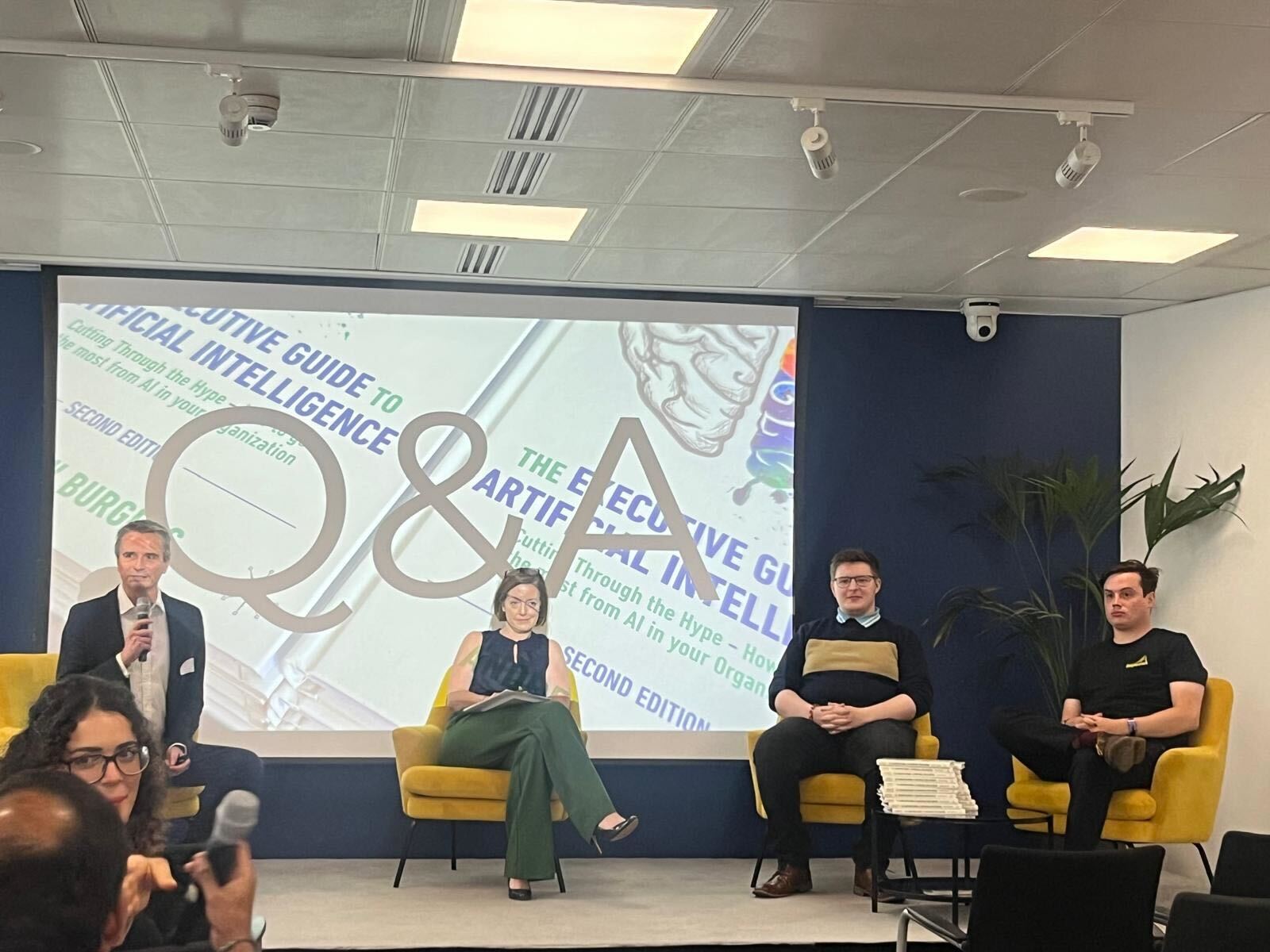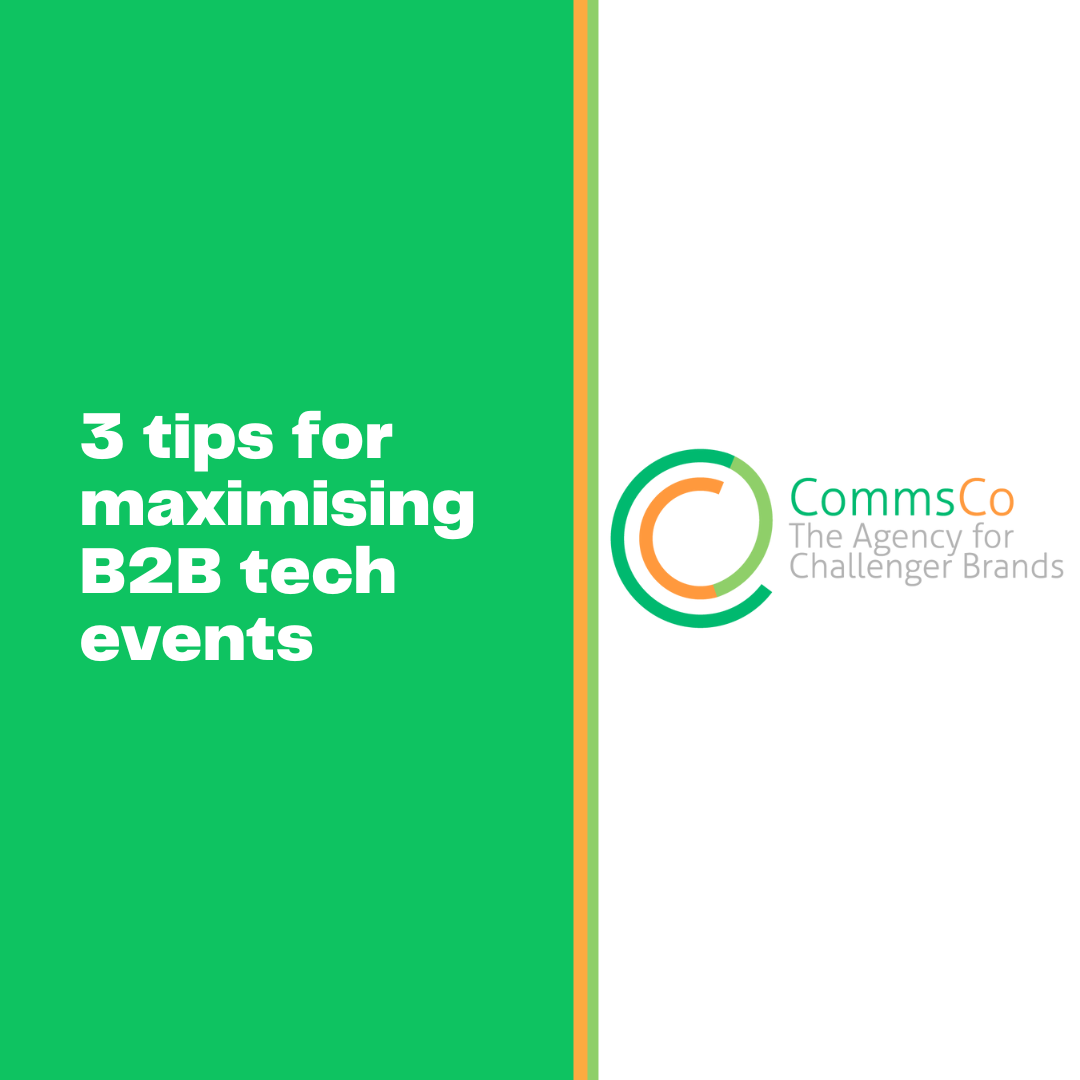Is AI net good to net bad? In other words, will it primarily have a positive or a negative impact on our world? This was a central theme of Andrew Burgess’ book launch, which took place at TechUK this week.
Titled, The Executive Guide to AI, the book takes a pragmatic and hype–free approach to explaining artificial intelligence and how it can be utilised by businesses today. This pragmatism was woven through the book launch event, with speakers including Georgina O’Toole, Chief Analyst at TechMarketView, and Ben Groves and Thomas Hughes of Bayezian.
AI is no longer in the hands of the tech elite
Having worked on a number of AI projects – including predicting pest infestations at the Natural History Museum and identifying donor propensity for large charities – Andrew started the event by outlining the dual nature of AI, its potential benefits, and the risks it poses, particularly in the context of generative AI’s ability to create deep fakes.
AI is now in the hands of the masses, and people can do good. But, equally, people can do harm. As Andrew said, “a lot of people using AI are potentially ill informed and naive, and they’re using one of the most powerful AI systems in the world that can lie very, very convincingly.”
Andrew presented a number of different poems, videos, and art – some real and some generated by AI. The audience had mixed success in guessing which were true and which were false…
The AI landscape
Georgina O’Toole then took to the stage to outline perspectives on the AI market. Although there’s been a huge amount of excitement building up around generative AI in boardrooms across the country, TechMarketView has been seeing continued wariness around these technologies.
When looking at AI through the lens of the ‘3 Cs’ – caution, concern and complexity – there’s plenty of caution as a result of past experiences from over-hyped technology. Companies have completed pilots, proof of concepts, and experiments, but many of them have failed. Data from Capgemini has suggested that 85% of these generative AI experiments are never making it into production. That’s a really high proportion.
So, what should companies be doing? It comes down to managing expectations much more carefully and being very clear about what generative AI can and can’t do.
Spot the difference
The final speakers of the day joined from AI incubator and innovator, Bayezian. Ben Groves gave an overview of a project the team undertook to better assess male fertility. Almost unseen to the human eye, AI can accurately determine morphological changes to sperm. This is something Ben presented visually, seeing if the audience could spot the difference between two groups of sperm images.
Thomas Hughes then talked about two projects the Bayezian team has undertaken with CRU – launching a new chatbot and a summary and translation tool of CRU’s work online. There’s no doubt that AI and machine learning is leading to impactful projects and results.
Net positive or net negative
Following a Q&A with Andrew, Georgina, Ben and Thomas, Andrew finished the event with audience polls on a number of questions. How soon will AI really change the world? Can we trust Big Tech companies to do the right thing? And ultimately, will AI by net positive or net negative.
These discussions spilled into the following networking session, where the AI was debated over wine and canapes.
A big thank you to the event sponsors Espire Infolabs and Bayezian (and CommsCo!). To all who attended, we hope you will remain part of our newly inaugurated ‘AI Innovators’ Collective’, a group where we will host ongoing discussion and future events.
If you’re interested in becoming part of the Collective, get in touch with hello@thecommsco.com.
Related Articles



